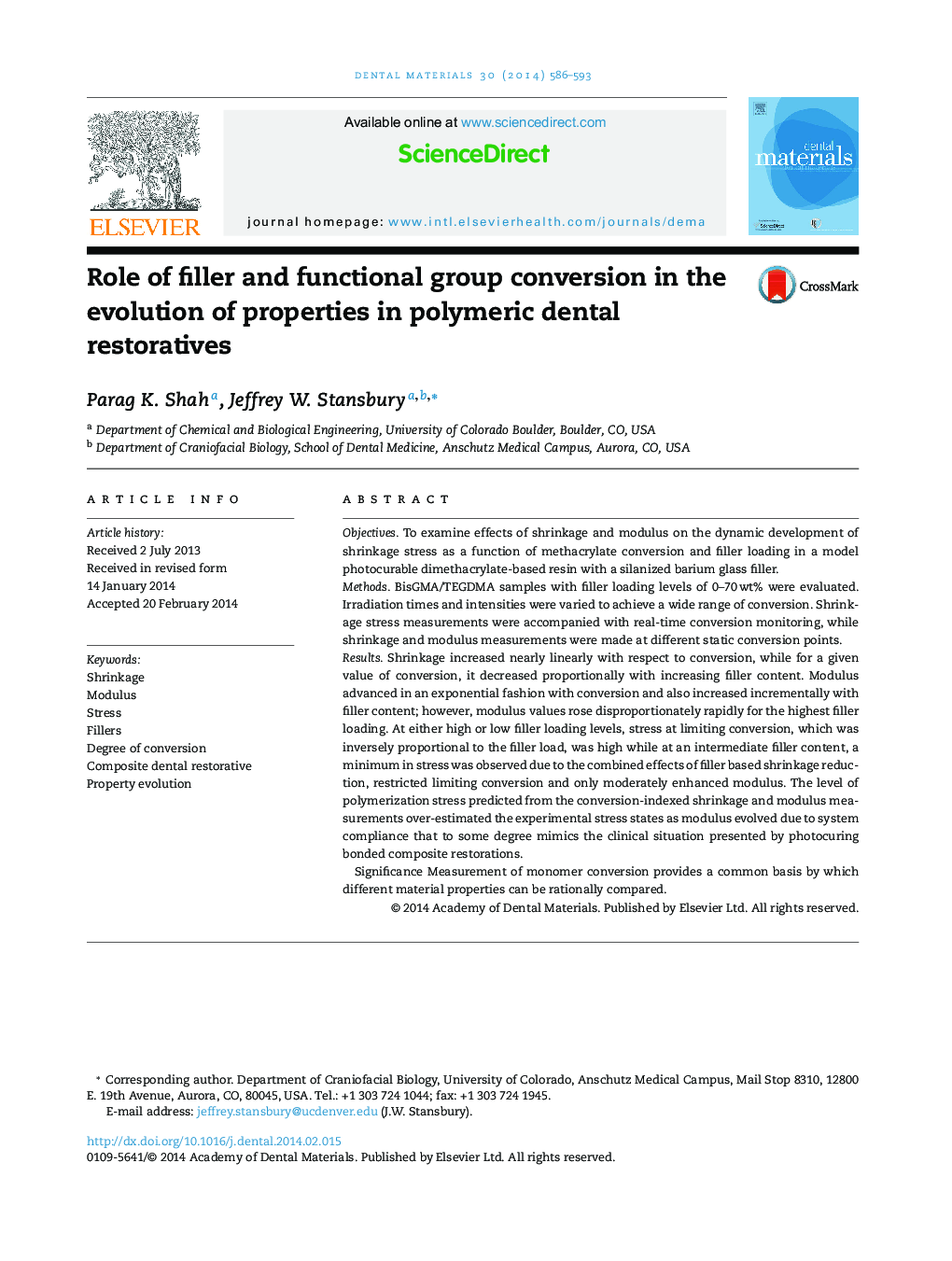| Article ID | Journal | Published Year | Pages | File Type |
|---|---|---|---|---|
| 1420883 | Dental Materials | 2014 | 8 Pages |
ObjectivesTo examine effects of shrinkage and modulus on the dynamic development of shrinkage stress as a function of methacrylate conversion and filler loading in a model photocurable dimethacrylate-based resin with a silanized barium glass filler.MethodsBisGMA/TEGDMA samples with filler loading levels of 0–70 wt% were evaluated. Irradiation times and intensities were varied to achieve a wide range of conversion. Shrinkage stress measurements were accompanied with real-time conversion monitoring, while shrinkage and modulus measurements were made at different static conversion points.ResultsShrinkage increased nearly linearly with respect to conversion, while for a given value of conversion, it decreased proportionally with increasing filler content. Modulus advanced in an exponential fashion with conversion and also increased incrementally with filler content; however, modulus values rose disproportionately rapidly for the highest filler loading. At either high or low filler loading levels, stress at limiting conversion, which was inversely proportional to the filler load, was high while at an intermediate filler content, a minimum in stress was observed due to the combined effects of filler based shrinkage reduction, restricted limiting conversion and only moderately enhanced modulus. The level of polymerization stress predicted from the conversion-indexed shrinkage and modulus measurements over-estimated the experimental stress states as modulus evolved due to system compliance that to some degree mimics the clinical situation presented by photocuring bonded composite restorations.Significance Measurement of monomer conversion provides a common basis by which different material properties can be rationally compared.
